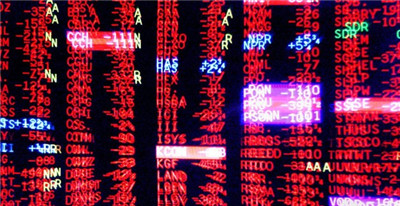(单词翻译:单击)
China and India are diverging again. Since the beginning of March, the MSCI China index is up one-fifth; MSCI India is down nearly one-tenth.
中国和印度再次出现分化。自3月初以来,摩根士丹利资本国际中国指数(MSCI China index)上涨五分之一;摩根士丹利资本国际印度指数则下跌近十分之一。
This is not what one might have expected: macro data have favoured India, where growth in output has been revised up and, at 7.5 per cent, is set to surpass that of China this year.
这不同于人们或许会预料到的结果:宏观数据对印度有利,印度已将预测产出增长率上调至7.5%,预计今年就将超越中国。

Institutional investors have been unprepared for China’s stock market rally. Asia fund managers are very overweight India, but only slightly ahead of benchmarks in China, on EPFR and MSCI data. Notably, as China’s rally has advanced, China country funds have had net outflows in all but two weeks of this year. Citi says that there is less global money invested in China now than at the start of 2012. India has one-tenth more.
机构投资者对中国股市涨势缺乏准备。EPFR和摩根士丹利资本国际的数据显示,亚洲基金管理公司对印度股票的配置权重远高于基准,但对中国股票的配置权重仅略高于基准。值得注意的是,随着中国股市继续反弹,专注于中国的基金今年除两周外,每周都遭遇净流出。花旗(Citi)表示,眼下投资于中国的国际资金比2012年初还要少。投资于印度的国际资金则多了十分之一。
The liquidity environment is similar in both countries, with falling rates freeing cash to chase equities. Yet despite the rally in the MSCI China index, multiple expansion has not been excessive. This is partly down to the constituents: MSCI China includes stately Hong Kong-listed shares such as PetroChina, Bank of China, Lenovo and Haitong Securities, but not racy Shanghai and Shenzhen-listed A shares, which have simply exploded.
两国的流动性环境类似,利率都在下降,释放出资金,能够追捧股票。然而,尽管摩根士丹利资本国际中国指数反弹,但市盈率的扩张并不过分。这在一定程度上缘于摩根士丹利资本国际中国指数选取的成分股:该指数包括了中石油(PetroChina)、中国银行(BoC)、联想(Lenovo)和海通证券(Haitong Securities)等在香港上市的蓝筹股,但并不包括更活跃的沪深两市A股,后者出现了爆炸式上涨。
Still, Citi notes MSCI China earnings are 58 per cent above their 2008 peak. Indian earnings, meanwhile, are 6 per cent up from pre-crisis levels.
话虽如此,花旗指出,摩根士丹利资本国际中国指数成分股的盈利比2008年的峰值高58%,而摩根士丹利资本国际印度指数的盈利比危机前水平高6%。
Volatility might also favour China: its volatility index has risen sharply this month, meaning investors must pay up for options to buy or sell shares in the future. Last week, the index hit 32, one-third of the high set at the peak of the 2008 panic. While also up, India’s volatility index is only 19, below the average of 25 since 2008.
波动性或许也有利于中国:其波动性指数本月大幅上涨,意味着投资者必须为未来买入或卖出股票的期权付出更高价格。上周,该指数达到32,是2008年危机高峰期最高值的三分之一。印度的波动性指数尽管也出现了上涨,但眼下仅为19,低于自2008年以来25的平均值。
This suggests that investors are increasingly scared about the rally in China. The more fear there is, the more likely it is that institutions will delay investing — until they have to capitulate and play catch-up. China shares have further room to outrun India.
这似乎表明投资者对中国股市反弹越来越恐惧。市场上恐惧氛围越严重,机构投资者就越有可能推迟投资,直到它们不得不投降、然后急着追赶。中国股票还有进一步跑赢印度的空间。


